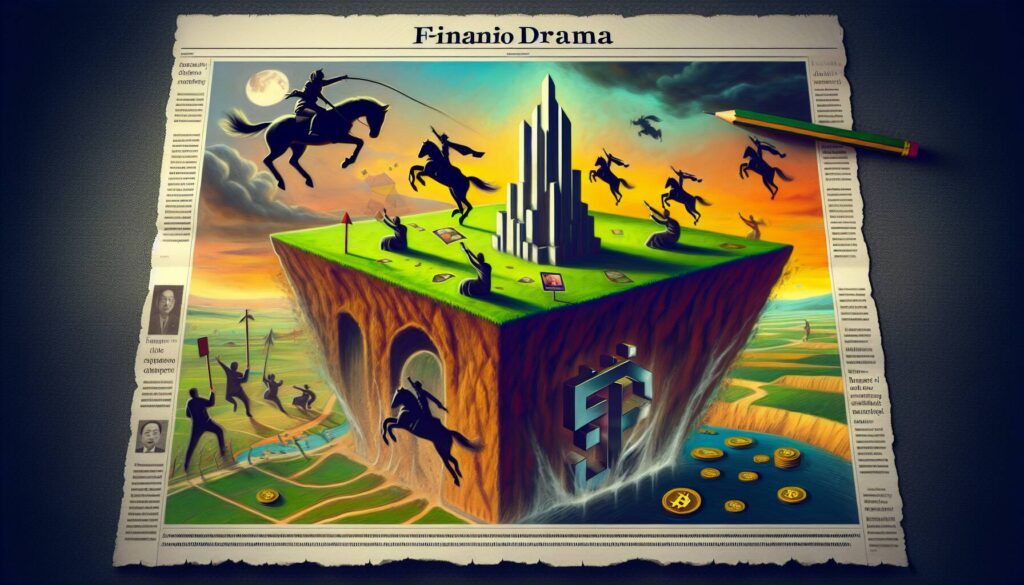In a significant development within the cryptocurrency landscape, Frankfurt-based 21X has announced the integration of Circle’s USDC stablecoin as a primary settlement currency on its platform, which specializes in trading tokenized stocks, bonds, and funds. This move is in line with the company’s commitment to create a multi-currency market that aligns with the European MiCA regulations. The integration of USDC is particularly noteworthy as it underscores 21X’s role as a pioneer in the institutional trading of tokenized securities, providing users with a streamlined and efficient trading experience.
Tokenization represents a critical intersection where traditional financial assets meet the innovative world of cryptocurrencies. With USDC, which is gaining traction as a trusted stablecoin issuer, 21X is well-equipped to facilitate a secure trading environment that meets regulatory standards set by Germany’s financial authority, BaFin. This partnership comes at a time when stablecoins are becoming increasingly vital in establishing trust in digital asset markets.
“Circle is deeply committed to supporting regulated infrastructure that fosters trust and transparency in digital asset markets,” said Sanja Kon, Vice President for Europe at Circle.
The integration promises to enhance the trading experience by enabling wallet-based, atomic settlement across a variety of tokenized financial instruments, thereby promoting broader adoption of on-chain finance. As 21X moves forward, the collaboration with Circle signals a pivotal moment for both the platform and the evolution of capital markets in Europe, offering a unique opportunity to engage with a new class of digital financial products.

Integration of USDC on 21X for Tokenized Trading
The following are key points regarding the integration of Circle’s USDC stablecoin on the Frankfurt-based trading platform 21X:
- Regulatory Compliance:
- 21X is regulated by Germany’s financial watchdog BaFin.
- The integration aligns with MiCA (Markets in Crypto-Assets) regulations, ensuring a compliant trading environment.
- USDC as Settlement Currency:
- USDC has been integrated as a key settlement currency for tokenized stocks, bonds, and funds.
- This allows users to transact in USD denomination, increasing familiarity and stability for investors.
- Tokenization in Traditional Finance:
- Tokenization bridges traditional finance and the cryptocurrency arena, enabling a more innovative trading environment.
- 21X facilitates wallet-based, atomic settlement for a variety of financial instruments.
- User Benefits:
- Access to a diverse range of tokenized instruments such as equities, bonds, and fund instruments.
- Enhanced efficiency and accessibility of capital markets for institutional investors.
- Commitment to Transparency:
- Circle’s support for regulated infrastructure promotes trust in digital asset markets.
- Increased adoption of on-chain finance streamlines transactions and market operations.
“Making USDC available to settle tokenized securities on 21X – Europe‘s first DLT exchange – will drive the adoption of on-chain finance, and foster more efficient and accessible capital markets.” – Sanja Kon, VP for Europe at Circle.
21X’s Strategic USDC Integration: Pioneering the Tokenized Securities Market
The integration of Circle’s USDC stablecoin by Frankfurt-based 21X marks a significant development in the evolving landscape of tokenized assets and regulated trading environments in Europe. Unlike many competitors that still grapple with compliance and interoperability, 21X’s partnership with a recognized entity like Circle aligns with the stringent regulations set forth by BaFin, enhancing its credibility and safety in the market. This strategic move not only allows for wallet-based, atomic settlements but also presents 21X as a frontrunner in offering a multi-currency trading platform, a feature that is gaining traction among institutional investors looking for versatile trading options.
One of the competitive advantages of 21X is its alignment with the European regulatory framework, particularly MiCA, which could provide a smoother path for institutional investors wary of the regulatory hurdles in other regions. In contrast, platforms that utilize less established stablecoins may face challenges related to trust and regulatory acceptance. However, this strategy also poses inherent risks; the reliance on USDC means that any disruption in Circle’s operations or a shift in its regulatory standing could directly impact 21X’s functionalities.
This integration is likely to benefit institutional traders looking for a reliable, regulated environment to trade tokenized stocks and bonds. The seamless USD-denominated transactions further simplify cross-border trading, appealing to global investors who require liquidity and transparency. On the flip side, traditional exchanges may feel threatened by the enhanced efficiency and lower friction that 21X offers, thereby pushing them to innovate or adopt similar blockchain technologies to maintain their competitive edge.
Moreover, while the integration of a widely accepted stablecoin like USDC is a powerful draw, it could inadvertently alienate users who prefer more decentralized or alternative currencies. For potential customers accustomed to varied cryptocurrency options, this could limit their engagement with the platform, presenting a challenge for 21X in balancing user expectations with regulatory compliance.

















